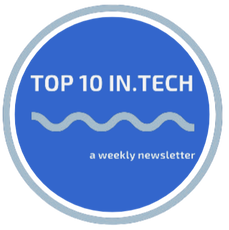|
I'm making this last newsletter of the year (taking a break next week) a customer-focused edition - happy holidays and happy new year y'all, thanks for all of your eye-balls and clicks this year.
POD OF THE WEEK: WFH life for Customer Success teams - the CEO of ChurnZero has a perspective on how to build this function remotely.
POD OF THE WEEK: Financial Reporting for Startups is something every founder has to up-skill at - this webinar (replay) covers operational and financial forecasts. Answering all those hairy questions - such as how do I forecast ARR when in startup mode?
WAIT A MINUTE - BONUS: This is a cool one sourced from the FKA Newsletter focused on what happens on the internet in a given minute in 2021 now that the global internet population is 5.2 billion (up from 4.5 billion last year). POD OF THE WEEK: Are you still a bit confused about #6 above? As in" "isn't that just describing Customer Success?" Well, no. Take a listen to this podcast to help clear things up a little by describing PPG from an agency perspective. |
|
